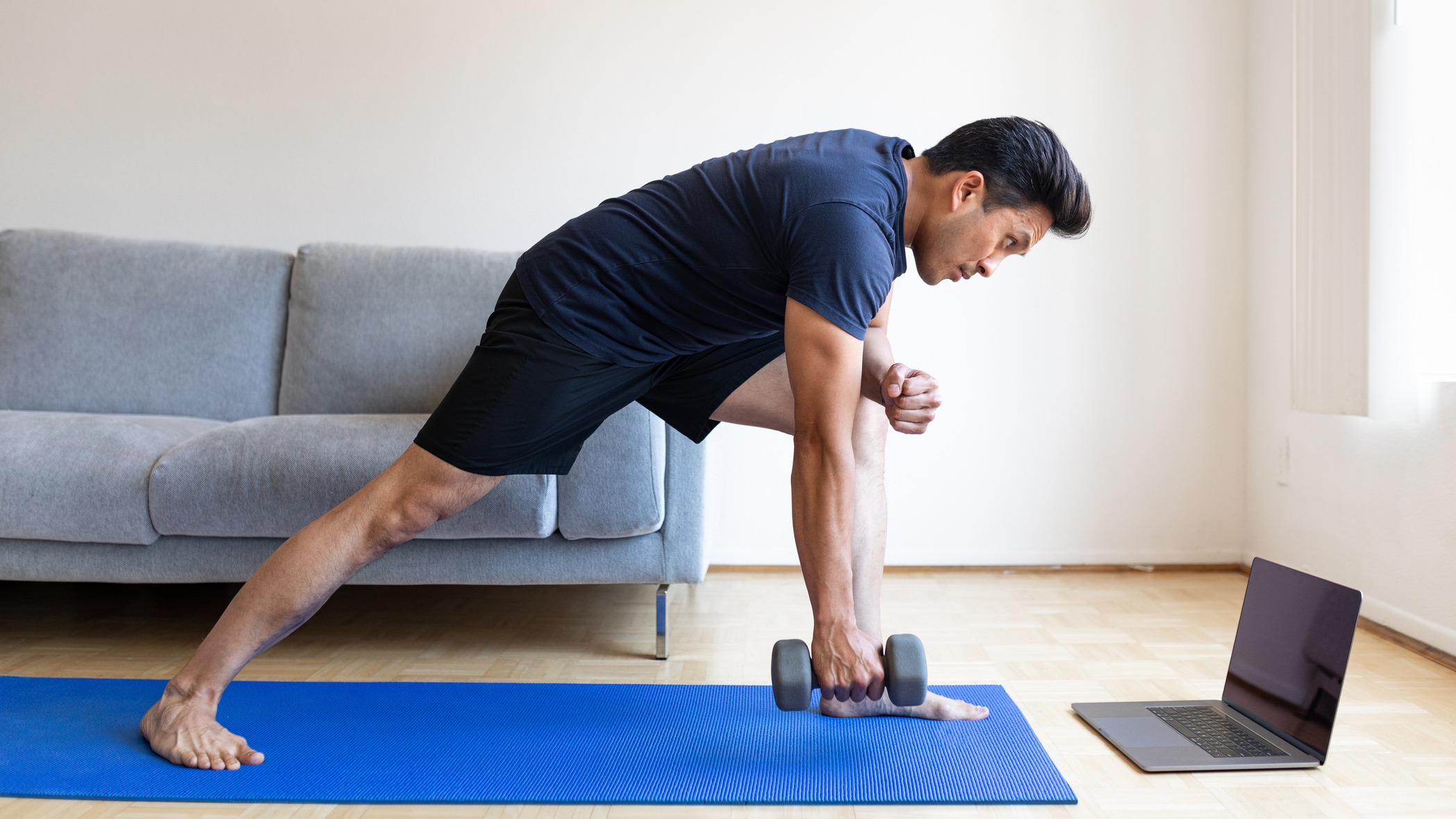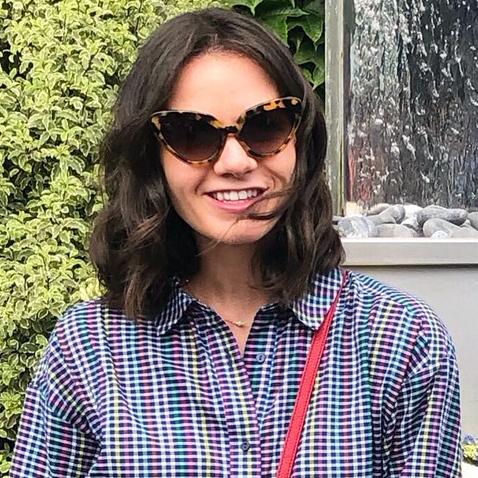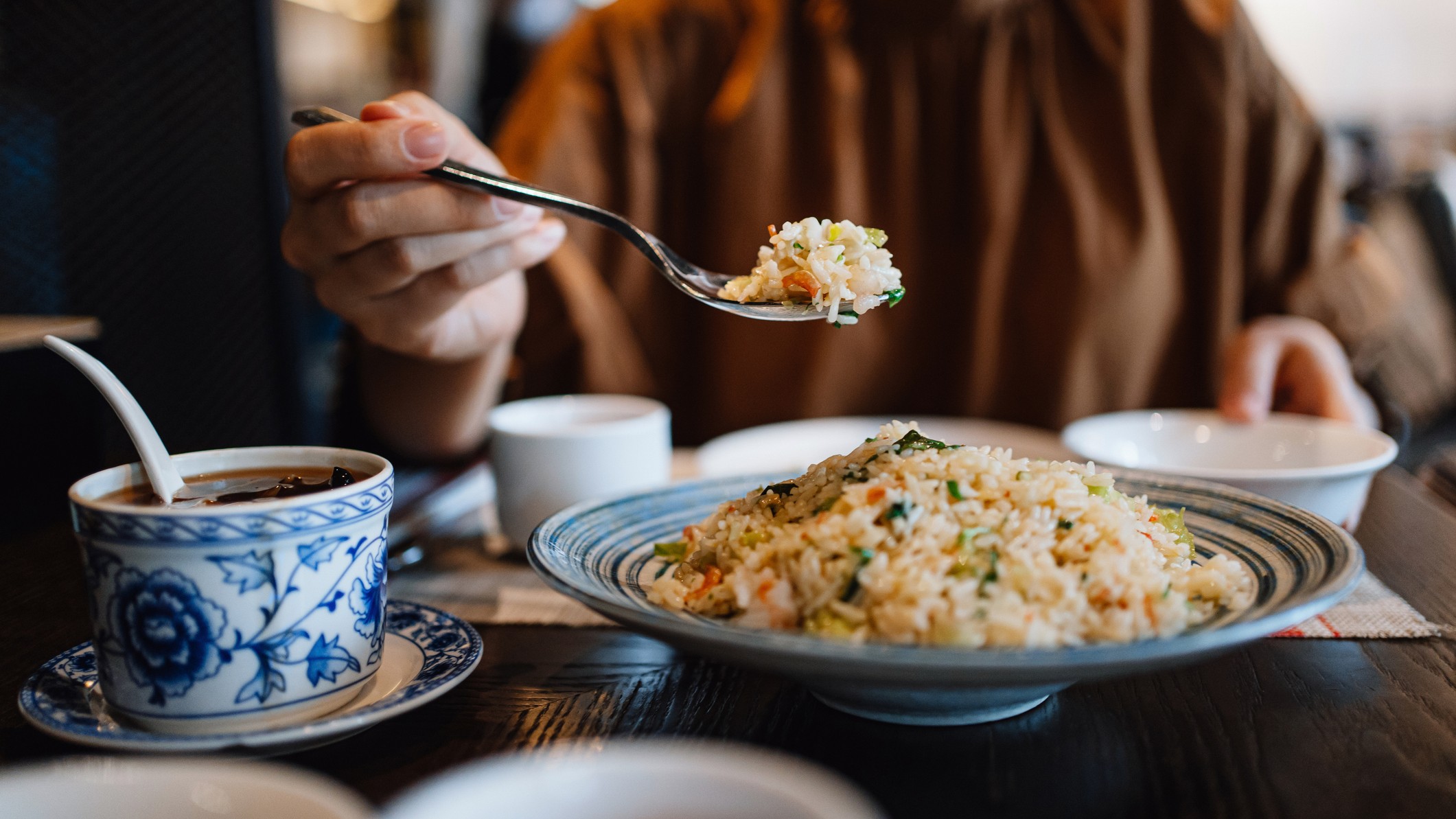Back workout: The six-move routine to exercise your back at home
This simple back-and-biceps routine will help you tone up and build muscle at home


Have you mastered the art of a push-up and squats at home, but finding back exercises are a little more challenging to effectively perform? No wonder. Without a decent bit of equipment and some know-how, it's tough to train our "pulling muscles" in the comfort of our own home.
Generally, we need a set of dumbbells or resistance bands to effectively train our back and biceps at home – something to create tension or weight. If you don't have either, you can check out our guides to the best resistance bands or best adjustable dumbbells. If you're already kitted out, our home back routine is for you – expect a stronger and more defined back with these safe exercise moves at home.
Ian Chapman, a personal trainer at Core Personal Training Studio in Surrey with over 15 years’ experience in the fitness industry explains more on back training. ‘Quite often people tend to focus their training on the muscles they can see…the mirror muscles! Chest, shoulders, abs and quads. Unfortunately, this approach, combined with sitting at a desk for long periods of time, is making us more and more hunched over and leading to many people suffering from the aforementioned injuries.’
‘Working from home can play havoc on your posture’ says Poonam Shah at Medical Home Visit, who has seen a rise in patients at her osteopathy clinic with back injuries from not stretching and performing exercises correctly or neglecting the back area all together.
Why back strength is important
Your back is your main support structure for your entire body and made up of multiple muscles, so by strengthening your back muscles you will be in fact supporting your spine and torso. The largest back muscles that most people are familiar with include the trapezius, latissimus dorsi, rhomboids, and erector spinae. Plus, there are smaller back muscles that need attention to properly strengthen the core back muscles.
‘The muscles in the back make up part of what’s known as the posterior chain. They’re some of the biggest and strongest muscles in the body and these guys are responsible for stabilising the spine and keeping us standing tall. Any weakness around this area can lead to poor posture, sore and stiff lower backs, shoulder injuries and more!’ says Ian.
A report by the University of St Mark and St John, Plymouth has reported that between 60%–80% of adults in Western countries are likely to experience lower back pain and highlights the importance of muscular strengthening back exercises - we list out some of the major benefits below:
Get the Fit&Well Newsletter
Start your week with achievable workout ideas, health tips and wellbeing advice in your inbox.
- Reduces and prevents back pain
- Better posture
- Improved spinal alignment
- Increasing core muscular strength
- Improved flexibility
- Increases blood flow
- Helps with balance
- Speeds up your metabolism
- Reduced stress on joints
Fueling your workout with protein and rest

The perfect formula to develop serious pulling power is to really fuel your body from the inside, starting with a good source of protein like oily fish, chicken, beans, tofu, lentils, yogurt, eggs and a shake with a scoop of protein powder. You can check out our guides to the best protein powder for weight loss, and best protein powder for women, if you're looking for the right supp for you. Smoothies with added protein powder are packed with nutrients to help repair and heal muscles and joints after a workout. Check out our tasty protein shake recipes from the world’s top fitness studios)
This next one might seem like a no-brainer, but don’t neglect your sleep, the power of sleep does wonders for your body. Adults are recommended seven hours of sleep a night, so try and not to be too harsh on yourself with an early alarm clock, as sleeping is your body’s strengthening and repairing process.
The workout
Ready to get started? Ian’s plan consists of six key exercises that targets the back area, you’ll want to grab a resistance band and a set of medium dumbbells. Make sure you pick a weight you're comfortable with and opt for three sets of eight reps for each workout.
‘Remember your body has a great future behind it… if you train it!’ adds Ian. Check out our guides to the workout moves below, including instructional videos.
1. Prone Overhead Reach With Band
- Start by lying face down with your arms in a ‘W’ position. Elbows just below shoulder blades, with forearms parallel with the floor.
- Maintain a constant tension on the band, try not to pull it further apart.
- Reach your arms out above your head.
- Whilst keeping the band tension the same and forearms parallel with the ground, return arms to the starting ‘W’ position.
2. Band Pull Apart
- Start by standing up straight with your arms extended out in front of you at chest height.
- Keep your head looking straight ahead and palms facing directly to the floor.
- Pull the band apart across your chest.
- Squeeze your shoulder blades together.
- Slowly and with control let your hands return to the start position.
3. Straight Arm Pull Down With Band
- Lean slightly forwards with your arms reaching out with a slight bend in the elbows.
- Without changing the angle of your elbows, pull the band to the side of your thighs in an arced direction.
- As you reach the end of the movement, focus on pulling you shoulder blades down and back.
- Pause for a second.
- Slowly return to the start.
4. Bent-Over Row
- Start in a bent over position. Hinging at the hips, knees soft, chin down and back straight not curved.
- Leading with your elbows, pull your arms up and back, pulling the dumbbells towards your mid to lower abdomen.
- Squeeze your shoulder blades back and down.
- Slowly return the weight to a straight arm position.
- Focus on not dropping the weight too quickly or letting your lower back start rounding or changing shape.
5. Single Arm Row
- Start with one knee and the same side hand on a bench, with the opposite leg out to the side and slightly bent.
- Hold a Dumbbell in your free hand and make sure your back is neutral and chin is down.
- Brace your abdomen to prevent any twisting of the hips.
- Leading with the elbow, pull the dumbbell up towards your middle, focus on drawing your shoulder blade back and down as you do.
- Slowly lower the weight to the start position and make sure you don’t overreach as you return to the start position.
Kirsty is an accomplished journalist specialising in the wellness industry. She has previously written for titles including Grazia, Popsugar, Metro.co.uk, Elle UK and the Sunday Telegraph. You’ll find her running around Windsor Great Park at 6am most mornings (before her toddler, Clementine Lilac, wakes up), followed by a virtual barre class with the team at Psycle London – where that barre burn is just so addictive. Kirsty loves to stock up on new activewear; because, let’s face it, you can never have too many pairs of sculpting leggings. She's always keen to try/endure the latest workouts to come to London. Kirsty also enjoys rustling up nutritious family meals and indulging in her newfound hobby: flower pressing.
-
 Do your gut a favor with this dietitian's gut-friendly veggie-filled fried rice recipe
Do your gut a favor with this dietitian's gut-friendly veggie-filled fried rice recipeKeep your tummy happy with this flavorful twist on a favorite
By Lou Mudge
-
 I’m a personal trainer and these are some of my favourite exercises to build core and upper body strength at home
I’m a personal trainer and these are some of my favourite exercises to build core and upper body strength at homeAll you need is a set of dumbbells for this kneeling workout
By Maddy Biddulph